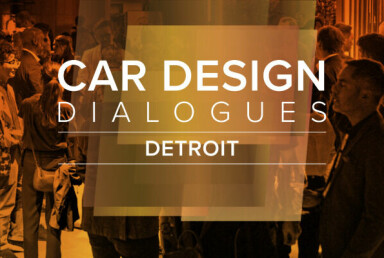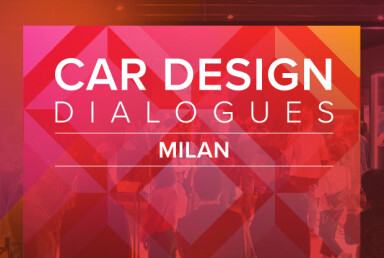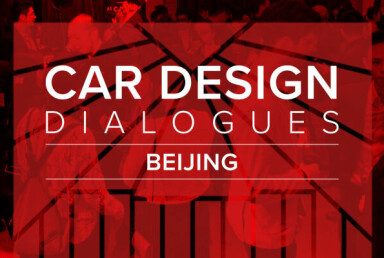Design talent
Car Design News October Focus: Design talent

This month Car Design News will be exploring the importance and evolution of design talent
The world of car design is being reshaped as quickly as the vehicles it produces. As carmakers face mounting cost pressures, they are restructuring R&D operations and rethinking how and where their teams collaborate – Ford’s plan to relocate its Dearborn headquarters to a new integrated campus is a notable example. Many automotive giants are consolidating creative resources, blending physical and digital studios and demanding more output from leaner, more agile teams.
According to Bain & Company, leading automakers expect to reduce R&D intensity by roughly one-third by 2027, prompting a reassessment of how design contributes to faster and more efficient development cycles. This cost discipline coincides with a surge in new design technologies and AI-assisted workflows that are transforming day-to-day creative practice. Designers now work alongside intelligent tools that provide value to traditional studios.
As design takes a more strategic role within OEMs, reporting lines and leadership structures are evolving. The rise of cross-functional design leaders reflects a growing recognition that aesthetics, user experience and technology integration must be conceived together from the start.
In this shifting landscape, Car Design News explores how design leaders can build agile, collaborative teams that thrive in uncertainty. The question for the next era isn’t whether AI or budget constraints will define design – but how human creativity, adaptability and leadership will guide the industry through the next decade. Speaking of which, CDN celebrates these thought-leaders at our People Awards, more information here.

How to build an agile team
One way to create exciting designs is the assembly of an agile and dynamic team (and retaining them, but more on that in the next section). When scouting for new talent, Ford’s Joel Piaskowski points out that basic considerations are still there: “We’re still looking for that raw talent, sifting through the portfolios to understand who’s really doing it.”
GM's retired senior vice-president Michael Simcoe thinks along a similar vein, stating that great sketches alone aren’t enough; designers must be able to think conceptually, build a compelling narrative and demonstrate how their ideas translate into tangible products.
For Mazda Motor Europe design director Jo Stenuit, passion for cars helps but isn’t essential as many sources of inspiration come from outside the industry: “I had an interior designer once who didn’t have a driver’s license, so wasn’t truly aware of how the car was functioning. So yes, I do have some really young, talented people that are into cars, and it really helps because they look at stuff differently. But I also want them to look at other stuff, not just cars, but they should look at graphic design, fashion, furniture, and try to combine all these elements into the automotive design.”
Gender balance comes into play when building a team, and to embrace this, a supportive team dynamic is key. Lynk & Co exterior designer Jiaqi Wang comments: “Even though things are improving, right now the industry is still a boy’s club. I’m normally the only woman in the exterior design team. But what’s important to me is that my teammates judge me by the quality of my work instead of my gender. I think that mindset allows growth without limitations.”

How to strengthen & retain the team
Once talent is obtained, building the right culture is critical. For former head of design at Volvo Cars, Jeremy Offer, fostering open communication is key. He implemented a “speak-up” culture in which every designer is empowered to share ideas and challenge assumptions – and to reinforce this openness, he even banned PowerPoint presentations in favour of direct and authentic discussions. Rivian’s chief design officer Jeff Hammoud echoes this sentiment, noting that one of a design leader’s main responsibilities is ensuring that design has a strong, respected voice within the organisation.
Ford’s global design director Paul Wraith adds another dimension: leadership often means shouldering pressures from upper management, and translating upper management demands into opportunities for creativity. This, he says, helps unlock each designer’s full potential. Meanwhile, Stellantis' head of North America design, Scott Krugger, captures the essence of cohesive design culture, describing designers as “the glue” that binds together the many departments that sometimes clash.

A new age for design studios
Automotive design is entering a new era defined by collaboration, technology and cross-disciplinary thinking. For Chris Benjamin, chief design officer at Scout Motors, designers are now seen as strategic influencers who help shape business direction. Leadership, he says, is about empowering people to bring their best ideas forward.
Simcoe describes the company’s new studio – “a big barn” – as a space designed for open interaction between designers, engineers, and modellers. It reflects a broader trend: breaking down silos so creativity and problem-solving can happen more fluidly.
Technology is also reshaping the process. Wraith prefers to be “an informed practitioner” using AI, while Lucid Motors' senior vice president of design and brand Derek Jenkins sees these tools as a way to explore more ideas, not just move faster. Jenkins believes designers must now become “editors,” curating and refining AI outputs into brand-specific stories that only humans can create.
Offer notes that the largest design discipline today is user experience – digital and physical alike – underscoring how design now touches every aspect of the customer journey. At Audi, this expanded role has been formally recognised: design now reports directly to the CEO. Chief creative officer Massimo Frascella says the shift reflects Audi’s transformation into a design-driven company. “Design today plays a different role from five, 10, 20 years ago,” he says. “It’s about a holistic view — bringing new disciplines together to shape the brand narrative.”




